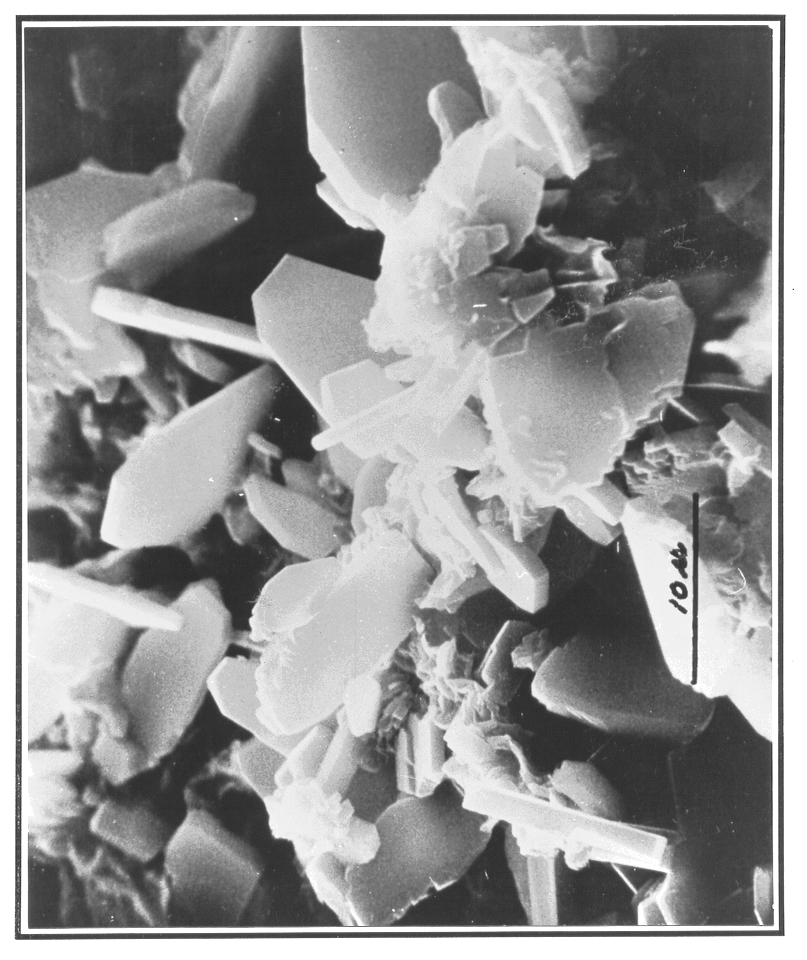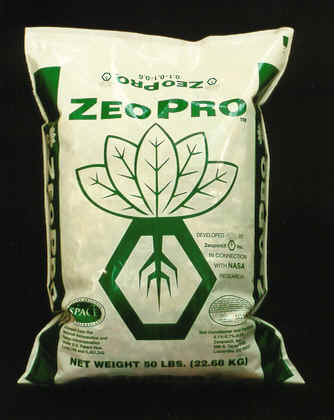Up
Products
Distributors
Research
Contacts
Zeoponic Technology
Zeolite
| |
|
Zeolite:
The Versatile Mineral |
|
 |
 |
 |
|
Zeolite
is a naturally occurring mineral group consisting of over 50 different
minerals. Made of a special crystalline structure that is porous but
remains rigid in the presence of water, zeolites can be adapted for a
variety of uses. |
| |
|
| |
|
| |
|
| |
|
| |
|
| |
|
| |
|
| |
|
| |
|
| |
|
| |
|
| |
|
| |
|
| |
|
| |
|
| |
|
 |
 |
|
Exactly
what are Zeolites?
Compositionally,
zeolites are similar to clay minerals. More specifically, both
are alumino-silicates. They differ, however, in their
crystalline structure. Many clays have a layered crystalline
structure (similar to a deck of cards) and are subject to shrinking
and swelling as water is absorbed and removed between the
layers. In contrast, zeolites have a rigid, 3-dimensional
crystalline structure (similar to a honeycomb) consisting of a
network of interconnected tunnels and cages. Water moves
freely in and out of these pores but the zeolite framework remains
rigid. Another special aspect of this structure is that the
pore and channel sizes are nearly uniform, allowing the crystal to
act as a molecular sieve. The porous zeolite is host to water
molecules and ions of potassium and calcium, as well as a
variety of other positively charged ions, but only those of
appropriate molecular size to fit into the pores are admitted
creating the "sieving" property. |
|
|
 |
 |
|
One important property of zeolite is the ability to exchange
cations. This is the trading of one charged ion for another on the
crystal. One measure of this property is the cation exchange
capacity (CEC). Zeolites have high CEC's, arising during the
formation of the zeolite from the substitution of an aluminum ion for a
silicon ion in a portion of the silicate framework (tetrahedral units that
make up the zeolite crystal). High CEC plays a vital role in several
ZeoponiX, Inc. products such as "ZeoPro"™ specialty
turf amendment. |
|
|
 |
 |
|
All
Zeolites are NOT the same!
When
developing applications for zeolites, it is important to remember
that not all of these minerals are the same. Some help to
assist plant growth while others make excellent filtration media,
but the same zeolite will not necessarily do both well. It is
critical to understand how zeolites differ so that only the
appropriate types and source materials are selected for each
application.
There are nearly 50
different types of zeolites (clinoptilolite, chabazite, phillipsite,
mordenite, etc.) with varying physical and chemical
properties. Crystal structure and chemical composition account
for the primary differences. Particle density, cation
selectivity, molecular pore size, and strength are only some of the
properties that can differ depending on the zeolite in
question. For example, clinoptilolite, the most common natural
zeolite, has 16% more void volume and pores as much as 0.2 nm larger
than analcime, another common zeolite. It is important to know
the specific type of zeolite one is using in order to assure that it
is appropriate for one's needs. ZeoponiX, Inc. has the
staff expertise to assist you with your zeolite application. |
|
 |
|
Variations not only occur between different types of zeolites but also in
the physical and chemical properties of zeolites of the same group.
Source plays a large role in these variations. For instance,
clinoptilolite from one source will not necessarily have the same
properties as clinoptilolite from another distinct source.
Environmental conditions during and following the geologic genesis of each
source are rarely the same, causing these variations. The types and
number of impurities present and the way in which the zeolites are
cemented together are all dependent on the unique conditions during
formation.
Finally, one difference between
zeolites worth giving special mention is the composition of exchangeable
cations residing in the zeolite. Exchange sites on natural zeolites
are primarily occupied by 3 major cations: potassium (K), calcium (Ca),
and sodium (Na) (other elements such as magnesium (Mg) may also be
present). Exchange sites on a particular zeolite may contain nearly
all K, nearly all Na, some Ca or Mg, or a combination of these. It
is important to take these differences into account when assessing which
zeolite to use for a particular product. Zeolites dominated by
exchangeable K for example, may be well-suited for plant growth
applications while those dominated by Na should be approached much more
carefully as Na in high concentrations can be detrimental to plants. |
 |
 |
|
Zeoponic
Materials
While
zeolites have several properties that make them highly useful
minerals, they can be chemically modified to make them even more
effective. In fact, one of the most successful uses of
zeolites have been in "zeoponic"
systems that utilize modified natural zeolite rather
than strictly raw natural zeolite. The best example of this
is zeolite used for plant growth applications. By changing the
composition of the ion exchange sites and by "loading" the
sites with selected nutrient cations, zeolites can become an
excellent plant growth medium. Other enhancements can also be
done to modify the properties. Combined with slowly dissolving
materials (such as synthetic and/or natural nutrient anions), these
nutrient-enhanced zeoponic materials supply plant roots with
additional vital nutrient cations and anions. Most
importantly, these nutrients are provided in a slow-release, plant
root demand-driven fashion. How does it work? Basically,
the process is a combination of dissolution and ion exchange
reactions. The absorption of nutrients from the soil solution
by plant roots drives the dissolution and ion exchange reactions,
pulling away nutrients as needed. The zeolite is then
"recharged" by the addition of more dissolved
nutrients. In effect, zeoponic systems increase nutrient
retention, reduce environmental nutrient losses and reduce
fertilizer requirements by establishing a replenishable and balanced
nutrient supply in the plant root zone. |
|
|
|

